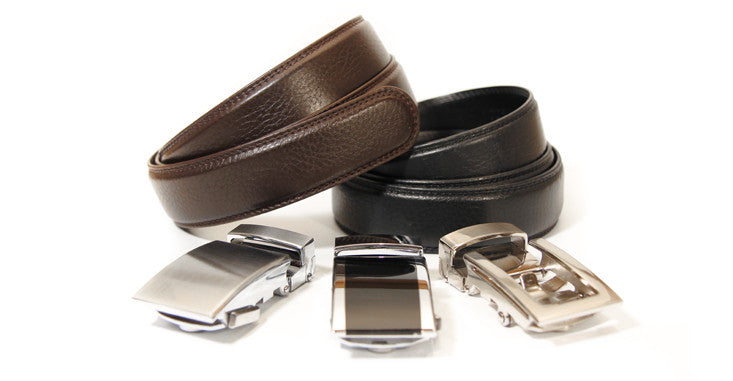*********************************************************************************
Note to readers: This review is outdated but I've kept it in its original form for information. There are two things you should keep in mind as you read on:- This review is based on my initial experiences and opinions only. To see my thoughts after wearing the belt for a year, read my follow-up post.
- Anson Belt & Buckle has made some changes since I made my purchase. They report that they have changed suppliers and improved the quality of their belt straps, so belts bought today won't be quite the same as the ones I reviewed. They also now advertise 100% satisfaction and a lifetime guarantee.
**************************************************************************************
I came across this website and thought to myself "what a great idea." (Note that these guys don't claim to be the innovators here. They freely admit to seeing this technology abroad first.) Since I needed a couple of new belts anyway, I decided to place an order. This is how my experience went:
Ordering
I ordered "Gift Box D" in the evening of 17 February 2013. The ordering process was quick and easy and I immediately received an automated confirmation email which included my order number and the invoice details.
Shipping
I received a second email the following morning, informing me that my order had been shipped. Included in this second email was my United States Postal Service tracking number and URL taking me directly to the package tracking page on the USPS website. The package was delivered on 28 February 2013. The box came both well-presented and well-packaged, especially when you consider that it wasn't exactly fragile... just two strips of leather and a few pieces of metal.
|
|
|
|
The buckles look nice from afar. However, close inspection reveals plenty of small flaws in the shiny plating.
 |
| Flaws in the plated surface of the buckle. |
I was a little disappointed in the colour of the brown belt. It's a few shades darker than I had expected. The contrast between the black and brown straps was less than the photos on the website had suggested.
|
|
 |
| Trimmed end of the black belt cut open and separated to expose laminae. |
However, it's not all bad news. The fact that the belt is adjustable in 6 mm increments is a definite plus. The ratcheting system will probably prevent the kind of damage to the belt's tongue that you get over time on a traditional belt. The stitching does look good and durable. I had a good overall impression of the belt when I first took it out of all that packaging. I've certainly had worse belts (though they also didn't cost so much). As far as laminated leather belts go, these look and feel really good.
Both leather straps were 51" long. I used one of the trimmed pieces for the dissection above and the other to run a little experiment on the durability of the belt. I'll post a follow-up when that experiment's over.
Despite all of the issues I've pointed out, I'd say that I am pleased with how the belts look. I'll have to wait to see how durable the belts really are before I decide if they're worth the price.














